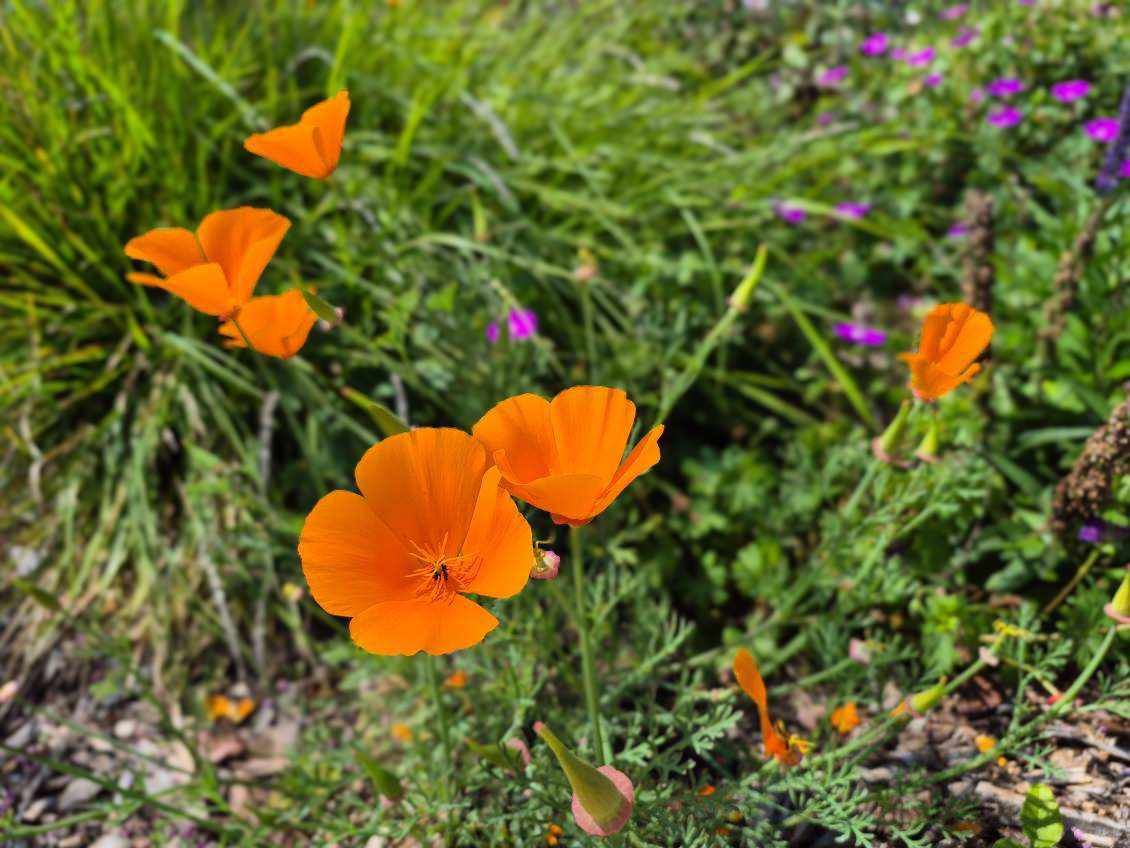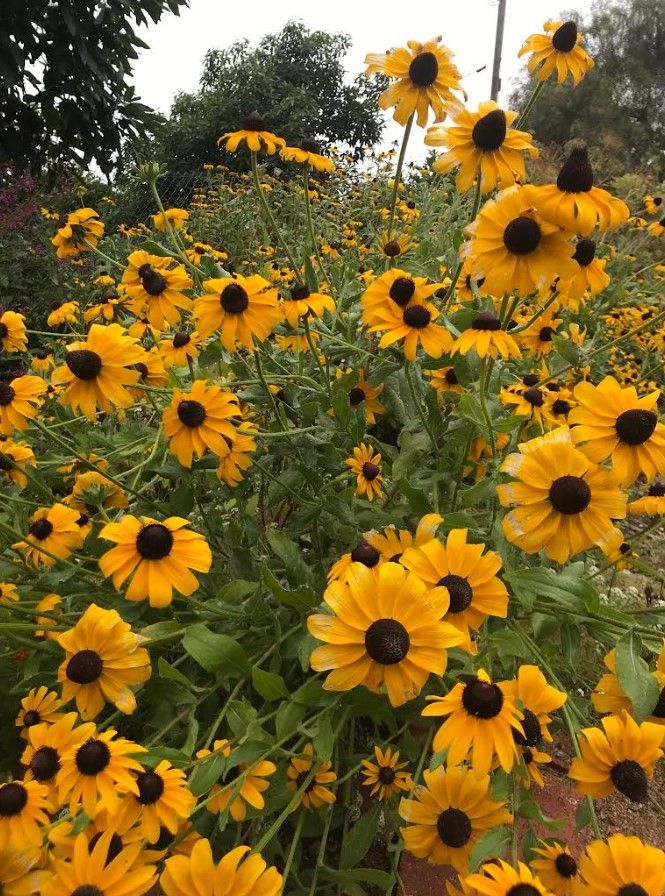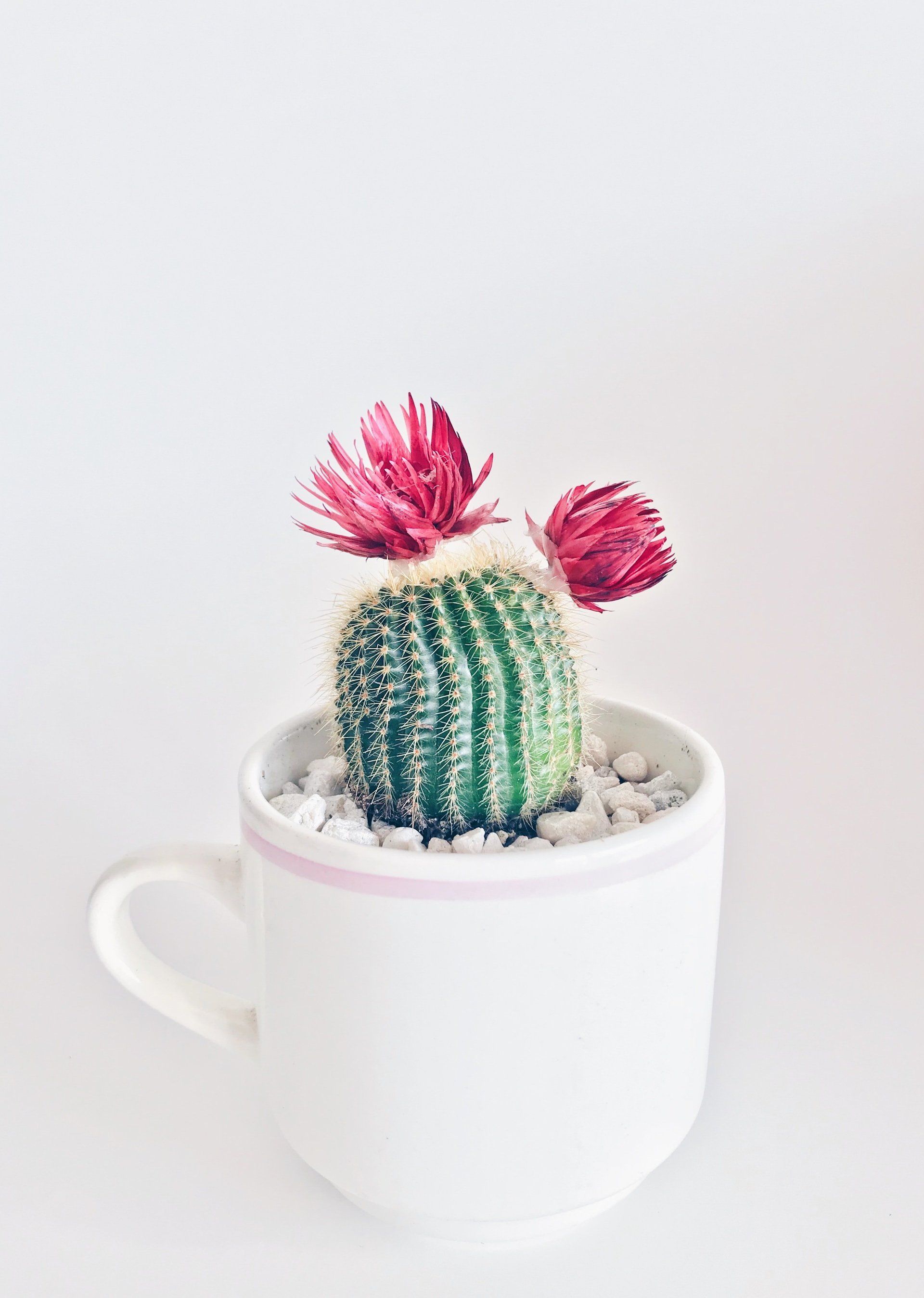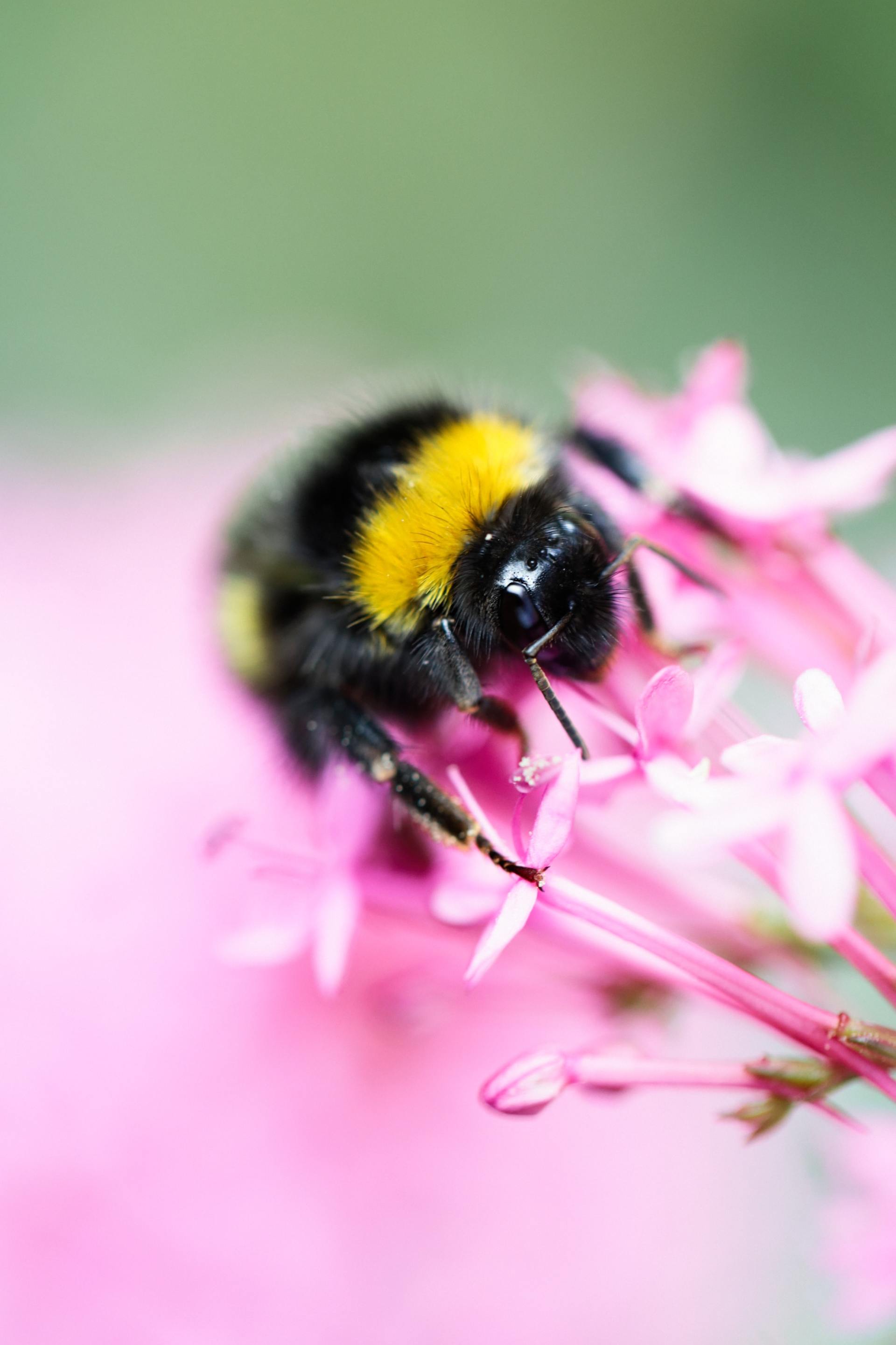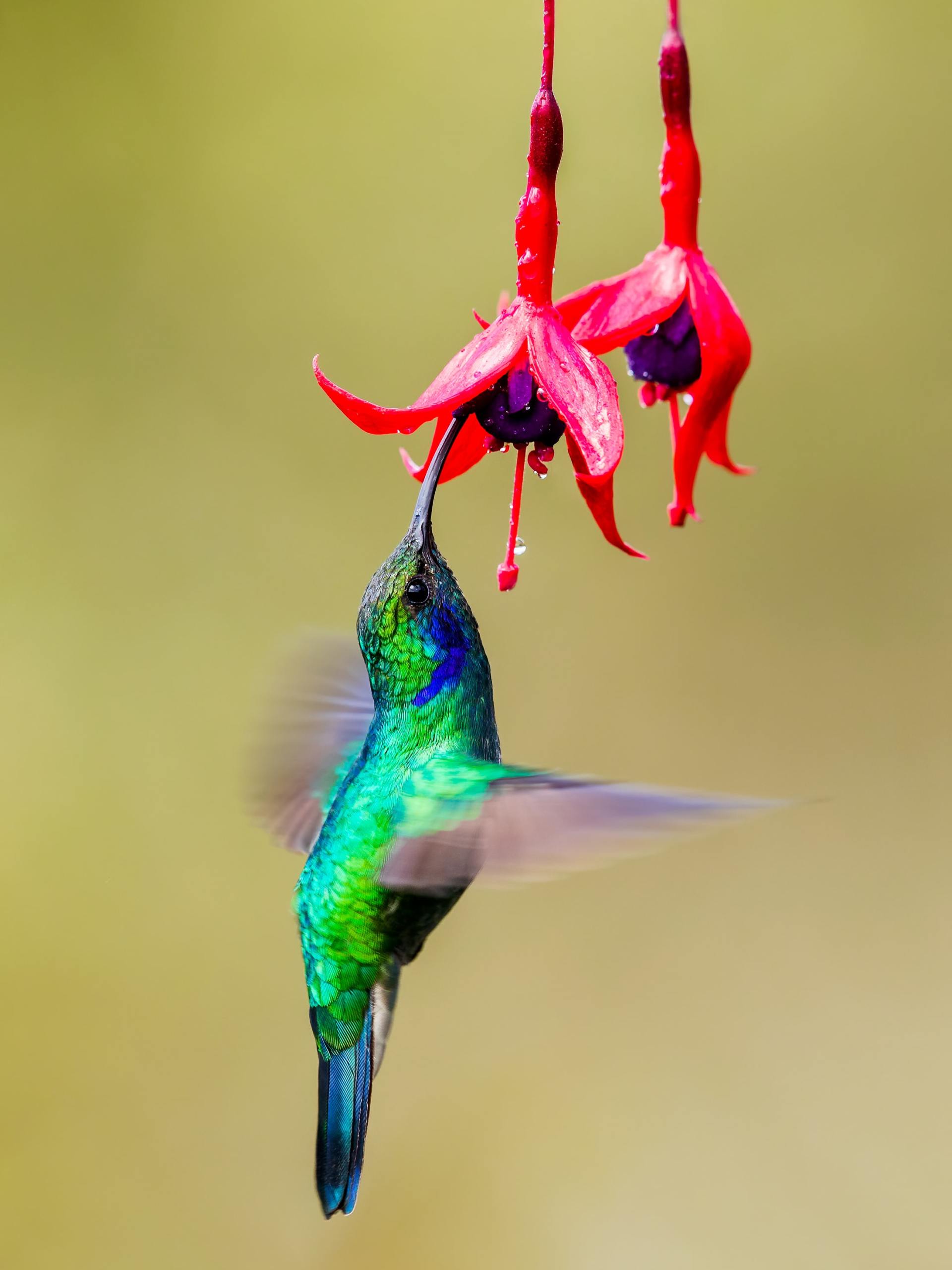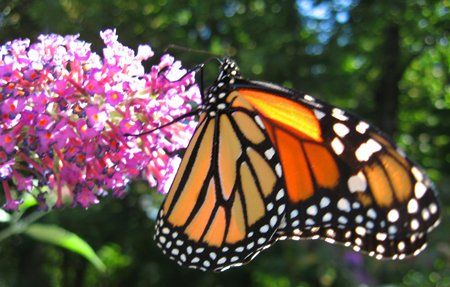The Butterfly Garden
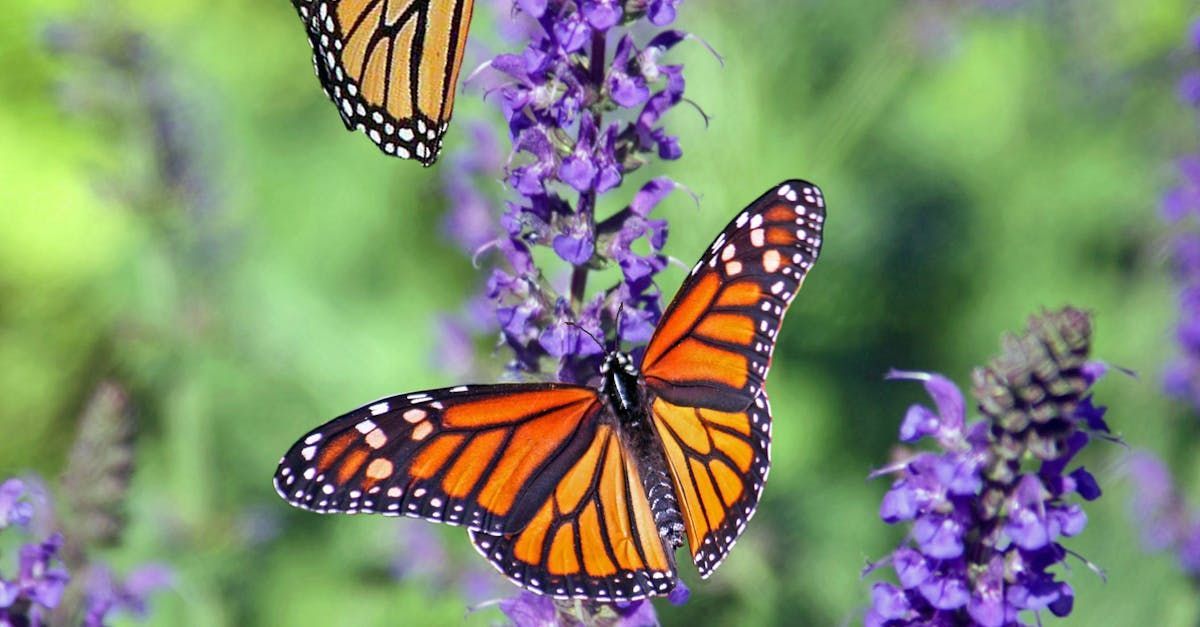
The Butterfly Garden
Butterflies are one of my favorite things. They are so beautiful as they seem to dance in the air. Sometimes I sit by our pond and before long Butterflies join me. It's August here in Southern California, and the Butterflies are all about…dancing through the air. There seems to be a season for them, however, I don’t know what it is…they just are a treat whenever they show up. I looked up Butterflies on Google and there were so many sizes and color variations it was just amazing. They are truly a gift from God, as I see it…like wildflowers! If I could gather up all the Wildflowers, Butterflies, and Stars in the night sky, I think It would be Heaven…or at least Heaven on Earth. Soooo…I plant a lot of Perennials because they seem to attract Butterflies. We could get scientific and look up what the experts say, but I prefer to just LOVE them. Here at Waterwise Botanicals I especially love to walk through the perennials or Cottage Garden Display when I most often see Butterflies. When I was a kid, we’d try to catch Butterflies, but they always won. Occasionally, we’d have the luck of cupping our hands together and close carefully around a Butterfly and feel the soft wings moving gently inside. It was magical and delightful, but only for a moment or two before we let it go. That was just as much fun…seeing it flutter out of our grasp and fly away.
I have been told that Milkweed is one of their favorite plants.
I found an article written by Debbie Hadley – “10 Fascinating Facts About Butterflies”. I have posted it below for other “Butterfly Lovers” like me. Enjoy!
Jackie Jesch
10 Fascinating Facts about Butterflies
By Debbie Hadley
Butterfly Wings Are Transparent
How can that be? We know butterflies as perhaps the most colorful, vibrant insects around! Well, a butterfly's wings are covered by thousands of tiny scales, and these scales reflect light in different colors. But underneath all of those scales, a butterfly wing is actually formed by layers of chitin—the same protein that makes up an insect's exoskeleton. These layers are so thin you can see right through them. As a butterfly ages, scales fall off the wings, leaving spots of transparency where the chitin layer is exposed.
Butterflies Taste With Their Feet
Butterflies have taste receptors on their feet to help them find their host plants and locate food. A female butterfly lands on different plants, drumming the leaves with her feet until the plant releases its juices. Spines on the back of her legs have chemoreceptors that detect the right match of plant chemicals. When she identifies the right plant, she lays her eggs. A butterfly of any biological sex will also step on its food, using organs that sense dissolved sugars to taste food sources like fermenting fruit.
Butterflies Live on an All-Liquid Diet
Speaking of butterflies eating, adult butterflies can only feed on liquids—usually nectar. Their mouthparts are modified to enable them to drink, but they can't chew solids. A proboscis, which functions as a drinking straw, stays curled up under the butterfly's chin until it finds a source of nectar or other liquid nutrition. The long, tubular structure then unfurls and sips up a meal. A few species of butterflies feed on sap, and some even resort to sipping from carrion. No matter the meal, they suck it up a straw.
A Butterfly Must Assemble Its Own Proboscis—Quickly
A butterfly that can't drink nectar is doomed. One of its first jobs as an adult butterfly is to assemble its mouthparts. When a new adult emerges from the pupal case or chrysalis, its mouth is in two pieces. Using palpi located adjacent to the proboscis, the butterfly begins working the two parts together to form a single, tubular proboscis. You may see a newly emerged butterfly curling and uncurling the proboscis over and over, testing it out.
Butterflies Drink From Mud Puddles
A butterfly cannot live on sugar alone; it needs minerals, too. To supplement its diet of nectar, a butterfly will occasionally sip from mud puddles, which are rich in minerals and salts. This behavior, called puddling, occurs more often in male butterflies, which incorporate the minerals into their sperm. These nutrients are then transferred to the female during mating and help improve the viability of her eggs.
Butterflies Can't Fly If They're Cold
Butterflies need an ideal body temperature of about 85 degrees Fahrenheit to fly. Since they're cold-blooded animals, they can't regulate their own body temperatures. As a result, the surrounding air temperature has a big impact on their ability to function. If the air temperature falls below 55 degrees Fahrenheit, butterflies are rendered immobile—unable to flee from predators or feed.
When air temperatures range between 82 and 100 degrees Fahrenheit, butterflies can fly with ease. Cooler days require a butterfly to warm up its flight muscles, either by shivering or basking in the sun.
A Newly Emerged Butterfly Can't Fly
Inside the chrysalis, a developing butterfly waits to emerge with its wings collapsed around its body. When it finally breaks free of the pupal case, it greets the world with tiny, shriveled wings. The butterfly must immediately pump body fluid through its wing veins to expand them. Once its wings reach their full size, the butterfly must rest for a few hours to allow its body to dry and harden before it can take its first flight.
Butterflies Often Live Just a Few Weeks
Once it emerges from its chrysalis as an adult, a butterfly has only two to four short weeks to live, in most cases. During that time, it focuses all its energy on two tasks: eating and mating. Some of the smallest butterflies, the blues, may only survive a few days. However, butterflies that overwinter as adults, like monarchs and mourning cloaks, can live as long as nine months.
Butterflies Are Nearsighted but Can See Colors
Within about 10–12 feet, butterfly eyesight is quite good. Anything beyond that distance gets a little blurry, though.
Despite that, butterflies can see not just some of the colors that we can see, but also a range of ultraviolet colors that are invisible to the human eye. The butterflies themselves may even have ultraviolet markings on their wings to help them identify one another and locate potential mates. Flowers, too, display ultraviolet markings that act as traffic signals to incoming pollinators like butterflies.
Butterflies Employ Tricks to Avoid Being Eaten
Butterflies rank pretty low on the food chain, with lots of hungry predators happy to make a meal of them. Therefore, they need some defense mechanisms. Some butterflies fold their wings to blend into the background, using camouflage to render themselves all but invisible to predators. Others try the opposite strategy, wearing vibrant colors and patterns that boldly announce their presence. Bright-colored insects often pack a toxic punch if eaten, so predators learn to avoid them.
To see images of our local butterflies, google "Butterflies of San Diego County"
We know you will enjoy them!
Tips & Hints
Recent Posts


